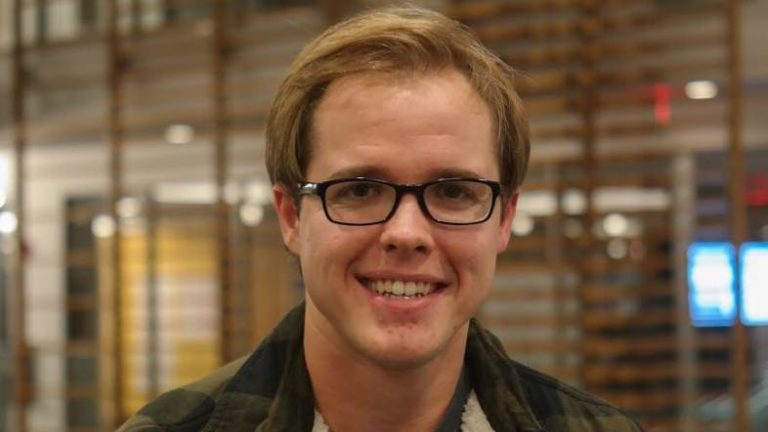Researcher Spotlight – Mike Madden

2018-19 Global Change Fellow
Ph.D. Student, Department of Marine, Earth, and Atmospheric Sciences
Advisor: Dr. Walter Robinson
Every year the Southeast Climate Adaptation Science Center funds a multi-disciplinary cohort of Global Change Fellows representing colleges across NC State University. Here are some highlights about 2018-19 Fellow, Mike Madden, and the applied research he’s conducting.
About You
Please briefly describe your research.
I study the mechanisms behind summertime heavy rainfall, and whether the warming patterns associated with climate change alter the intensity or duration of these storms.
About Your Research
What results are you finding?
My first case study was the storm that wreaked havoc upon Raleigh in July 2016. A line of storms crossed the Triangle on an early summer’s evening. Several people were rescued, roads closed, and property damage estimates were in the hundreds of thousand dollars range. The storm also flooded the parking garage of a busy shopping mall.
To create a means of comparison, I needed a control experiment. I took a numerical snapshot of the atmosphere about eight hours prior to the time of heaviest rainfall, and attempted to simulate the storm as it happened from that point in time. Then, I examined the model for accuracy. There were a few imperfections, but the model got the general idea of what happened that evening.
Then, I conducted the same experiment again, but with temperatures that we’d expect from future climate change. This meant changing the atmospheric temperatures, soil temperatures, and sea-surface temperatures. After those changes, I ran the experiment again, and saw some interesting things… The storm traveled a little faster, and it dumped more rain.
What are some potential real-world applications of your research?
Let’s say you’re into city planning and infrastructure, and let’s also say that you understand the science and projections of climate change. Fantastic, but the next question then regards how the weather changes in response. If you’re trying to design the next bridge or dam, you’ll want to know how bad the weather could theoretically get under a future climate. Will the one-in-a-thousand flood of today become the one-in-a-hundred flood of tomorrow?… Those are the kinds of questions we need to be asking.
What is your favorite part of the research that you get to do?
I’ve always liked computers. As a kid I would spend hours on a computer each day, just playing with the hardware and operating system. I would read Dummies books about Windows and PCs, and I nerded out so far as to ask for Bill Gates’s autobiography for Christmas. I think I was 7 or 8. Later I developed an appreciation for weather, and nature in general, so I wanted to look for a pathway that combined the two interests. Naturally computational weather modeling fit the bill. Modeling is fun for me – you get to play with the code, you have to continually adapt to changing systems and hardware, and you can create neat and colorful graphics. There’s an aesthetic nature to it – maybe I can make an art piece of it some day.
About Your Global Change Fellow Experience
What advice would you give to a student that is interested in getting involved in your field?
Play with the models. Don’t worry about “getting a product” or “having some deliverable.” Don’t go in with a goal. Just explore the model, and see how it works. Marvel at the fact that it took hundreds of years to understand the physics that went into the model’s core. Envision the scientists that worked for years on the codes. Change different parameters and equations, and see what happens. Does the model fail? Good. Why did that happen? Did the model produce a lot of rain? Wonderful. How can you get it to produce more rain? It’s your own little world. Often in science, great work doesn’t start with a plan. Sometimes it occurs when someone says “hey, what does that do?”
- Categories:
